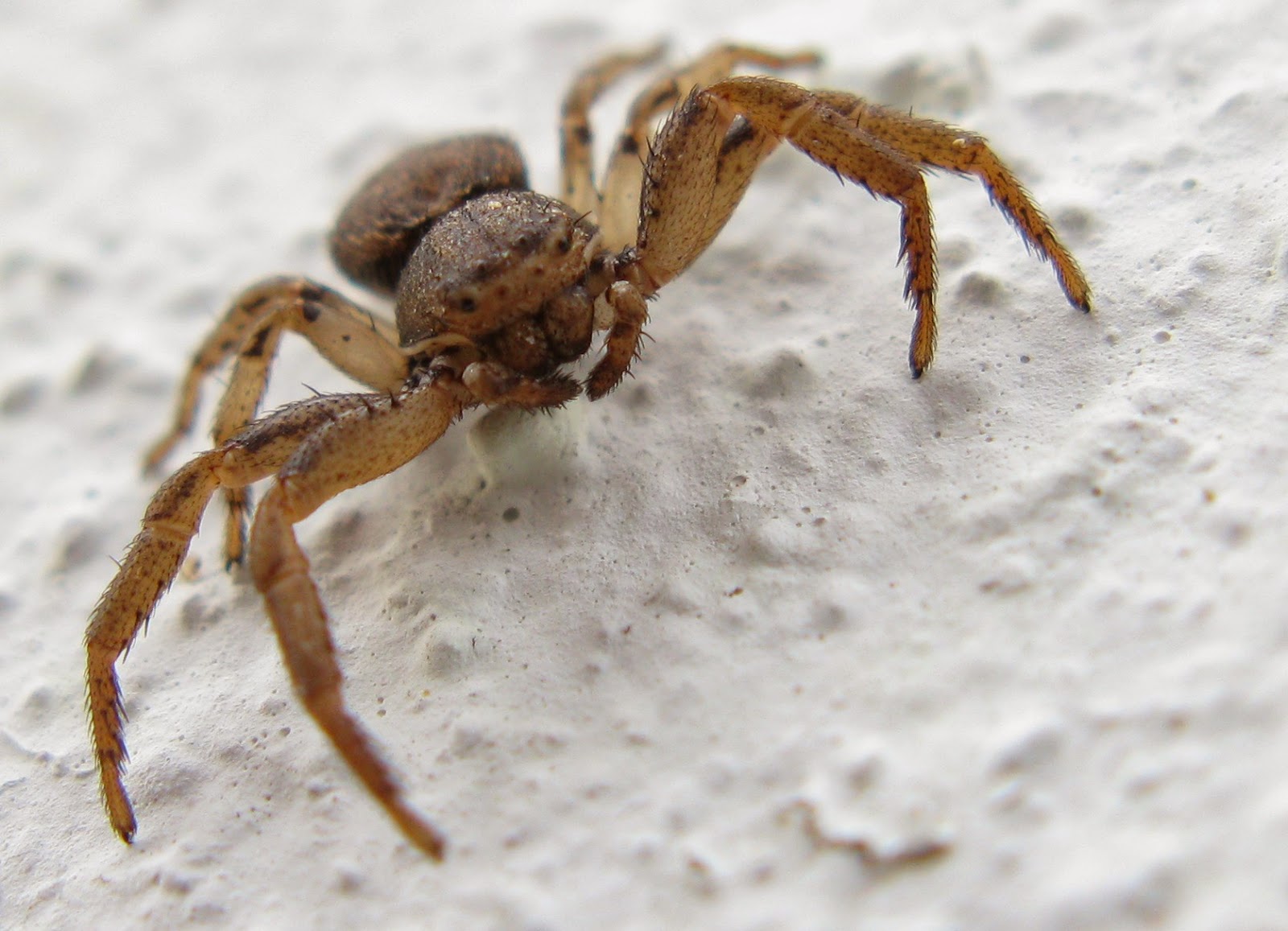Crab spider is a common name applied loosely to many species of spiders, but most nearly consistently to members of the family Thomisidae. Among the Thomisidae it refers most often to the familiar species of "flower crab spiders", though not all members of the family are limited to ambush hunting in flowers.
However, some members of the Sparassidae are called giant crab spiders, Selenopidae are called wall crab spiders, and various members of the Sicariidae are sometimes called six-eyed crab spiders. Some unrelated Orb-weaver spider species such as Gasteracantha cancriformis also are commonly called "crab spiders."
Thomisidae do not build webs to trap prey, though all of them produce silk for drop lines and sundry reproductive purposes; some are wandering hunters and the most widely known are ambush predators. Some species sit on or beside flowers or fruit, where they grab visiting insects. Individuals of some species, such as Misumena vatia, are able to change color over a period of some days, to match the flower on which they are sitting. Some species frequent promising positions among leaves or bark, where they await prey, and some of them will sit in the open, where they are startlingly good mimics of bird droppings. However, note that these members of the family Thomisidae are not to be confused with the spiders that generally are called bird dropping spiders, not all of which are close relatives of crab spiders.
Other species of crab spiders with flattened bodies, either hunt in the crevices of tree trunks or under loose bark, or shelter under such crevices by day, and come out at night to hunt. Members of the genus Xysticus hunt in the leaf litter on the ground. In each case, crab spiders use their powerful front legs to grab and hold onto prey while paralyzing it with a venomous bite.
These colourful spiders blend into their surroundings amongst leaves and flowers, where they lie in wait for unsuspecting flies and bees. Some species can even change colour to match the flower they are on.
These colourful spiders blend into their surroundings amongst leaves and flowers, where they lie in wait for unsuspecting flies and bees. Some species can even change colour to match the flower they are on.








ConversionConversion EmoticonEmoticon